CPU-Vergleich: Die besten Prozessoren im Vergleich
Der Prozessor, auch CPU (kurz für Central Processing Unit) genannt, ist das Herzstück eines Computers. Dementsprechend wichtig ist es, dass Sie sich beim Kauf eines Rechners – oder des Prozessors an sich, wenn Sie Ihren PC selbst zusammenbauen – eingehend darüber Gedanken machen und sich informieren, welcher Prozessor am besten für Ihre Bedürfnisse geeignet ist. Sogar wenn Sie lediglich die CPU Ihres PCs upgraden möchten, ist es sinnvoll, sich vor dem Kauf mit einem CPU-Vergleich zu beschäftigen und etwas Recherche zu betreiben. Allen voran ist wichtig, dass der Prozessor genug Leistung bringt, damit die anderen Komponenten Ihres Computers ebenfalls ihr maximales Potential entfalten können.
Vor dem Kauf: So finden Sie den richtigen Prozessor mit unserem CPU-Vergleich
Eine CPU ist keine günstige Anschaffung. Umso wichtiger ist es, dass Sie sich beim Kauf nicht vergreifen und genau den richtigen Prozessor finden. Damit Sie Ihre Suche von vorneherein fokussieren können, lohnt es sich, im Vorfeld ein paar Fragen zu beantworten.
— Welche Hardware haben Sie bereits? Wenn Sie Ihren PC mit einer neuen CPU upgraden wollen oder Ihren Rechner selbst zusammenbauen, steht vor dem Abwägen der Vor- und Nachteile einzelner CPUs erstmal eine Bestandsaufnahme an. Neben den technischen Daten ist nämlich zuerst einmal wichtig, dass Ihr neuer Prozessor die richtigen Anschlüsse hat. Allen voran ist hier der Sockel wichtig, die Verbindung zwischen CPU und Motherboard. Diesen können Sie mittels Programmen wie CPU-Z herausfinden, die die Hardwareeigenschaften Ihres Computers auslesen können. Dieser Schritt ist essentiell, da sowohl Intel als auch AMD, die beiden großen Hersteller, Prozessoren mit verschiedenen Sockelarten im Sortiment haben. Ganz zu schweigen davon, dass ein Fehlkauf eine teure Angelegenheit ist. Ein guter Prozessor kann bis über 600 Euro kosten. Vergessen Sie dabei auch nicht auf andere Anschlüsse, wie etwa für die Grafikkarte, zu achten.
— Wofür nutzen Sie Ihren PC primär? Natürlich spricht einiges dafür, seinen PC zu optimieren und so weit wie möglich upzugraden. Allerdings sollten Sie trotz allem zuerst realistisch festlegen, was Sie wirklich brauchen. Zum einen spart es Ihnen natürlich Geld – gute CPUs für Office und das Surfen im Web sind bereits ab 50 bis 150 Euro zu haben – zum anderen ist es schlichtweg sinnvoller, sich nur so viel Leistung zu kaufen, wie Sie auch realistisch nutzen. Falls sich Ihre Anforderungen ändern, besteht immer die Möglichkeit, zu einem späteren Zeitpunkt in einen höherpreisigen Prozessor zu investieren.
Allerdings sollten Sie trotz allem zuerst realistisch festlegen, was Sie wirklich brauchen. Zum einen spart es Ihnen natürlich Geld – gute CPUs für Office und das Surfen im Web sind bereits ab 50 bis 150 Euro zu haben – zum anderen ist es schlichtweg sinnvoller, sich nur so viel Leistung zu kaufen, wie Sie auch realistisch nutzen. Falls sich Ihre Anforderungen ändern, besteht immer die Möglichkeit, zu einem späteren Zeitpunkt in einen höherpreisigen Prozessor zu investieren.
— Wieviel sind Sie bereit auszugeben? Zu guter Letzt sollten Sie sich auch Gedanken über Ihr Budget machen und einen guten Kompromiss zwischen Anforderungen und Preis finden. Für Highend-Prozessoren müssen Sie mit Preisen von 180 bis 600 Euro rechnen.
Unsere Bestenliste bietet Ihnen die Möglichkeit, bestimmte Filter anzuwenden. So können Sie u.a. nach Hersteller, Preis, Fertigungsprozess oder TPD filtern. Sie können ebenso durch unseren CPU-Vergleich mehrere Prozessoren gegenüber stellen und sich unsere Einschätzung sowie die technischen Daten auf einem Blick zeigen lassen.
Intel und AMD – die beiden großen Prozessor-Hersteller im Vergleich
Die zwei großen CPU-Hersteller heißen AMD und Intel. Intel vertreibt die beliebte Intel-Core-Reihe mit den Modellen i3, i5, i7 und inzwischen auch i9. Außerdem gibt es unter anderem noch die Produktserien Intel Celeron, Intel Atom, sowie Intel Pentium. Die Unterschiede zwischen i3, i5, i7 und i9 liegen grob gesagt in der Anzahl der Prozessorkerne, der Fähigkeit zum Multithreading und der Performance im Allgemeinen. Für eine Intel-Grafikkarte brauchen Sie einen von drei Sockeln: LGA 1151, LGA 1151v2 oder LGA 2066.
Bei AMD gibt es die Ryzen- und Ryzen-Threadripper-Reihe, sowie die Serien Athlon, FX und A-Serie. Die Ryzen-Reihe gibt es auch in den Ausführungen Ryzen 3, Ryzen 5 und Ryzen 7. Die Grafikkarten der Ryzen-Serie brauchen allesamt den AM4-Sockel. Einzige Ausnahme bietet die Spitzenreihe Ryzen Treadripper. Für diese braucht es einen TR4-Sockel.
Unser CPU-Vergleich ermöglicht das Filtern nach Herstellern, wenn Sie diesbezüglich bestimmte Präferenzen haben.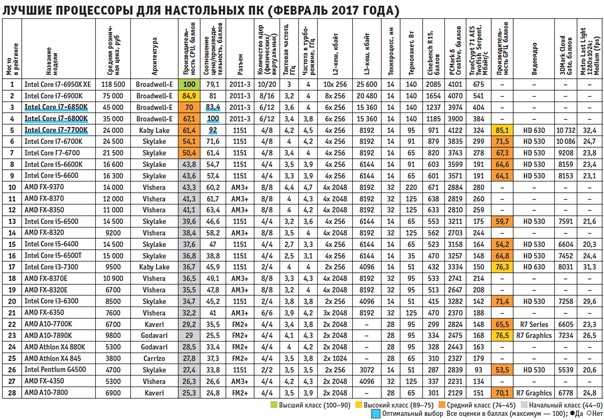
CPU-Vergleich: Auf CPU-Leistung, Stromverbrauch und Taktfrequenz achten
Wenn Sie grundsätzlich geklärt haben, wieviel Leistung Ihre CPU haben soll und welche Hardware-Voraussetzungen sie erfüllen muss, sollte das Ihre Suche schon um einiges einschränken und so vereinfachen. Auch ein Budget hilft, die Auswahl einzugrenzen. Um die einzelnen Optionen sinnvoll im Prozessor-Vergleich zu betrachten, können Sie sich an einigen wichtigen Angaben orientieren.
— CPU-Leistung: Die Leistung ist ein entscheidender Faktor, denn Sie bestimmt, wie schnell der Prozessor arbeitet. Als solches ist sie eines der wichtigsten Vergleichskriterien, wenn Sie verschiedene CPUs gegeneinander abwägen. In Reviews werden zusätzlich zur allgemeinen Leistung oft noch die Ergebnisse bestimmter Benchmark-Tests genannt. Diese testen die Leistung des Prozessors bei der Bewältigung verschiedener spezifischer Aufgaben. Nutzen Sie Ihren Rechner beispielsweise zur Videobearbeitung ist der Handbrake-Benchmark relevant für Sie. Gamer sollten ein Auge auf den synthetischen Benchmark 3DMark Fire Strike werfen und über den alltäglichen Desktop-Gebrauch gibt der PCMark Auskunft.
Gamer sollten ein Auge auf den synthetischen Benchmark 3DMark Fire Strike werfen und über den alltäglichen Desktop-Gebrauch gibt der PCMark Auskunft.
— Kühlung: Je nachdem, für welchen Prozessor Sie sich entscheiden, ist ein Kühler bereits eingebaut oder muss zusätzlich gekauft werden. Gerade bei höherpreisigen Modellen ist der Lüfter oft nicht eingebaut. Das liegt daran, dass in diesen Preiskategorien ein externer Lüfter meist sowieso nachgerüstet wird, da es hier effizientere Modelle zur Kühlung gibt.
— Stromverbrauch: Sowohl die Rechenleistung als auch die Kühlung haben Einfluss auf den Stromverbrauch. Wenn Sie sich eine wirklich leistungsfähige Workstation bauen wollen, müssen Sie sich deshalb auch Gedanken über das passende Netzteil für Ihren Prozessor machen.
— Taktung: Die Taktung bezeichnet die Geschwindigkeit, mit der der Prozessor einzelne Aufgaben bearbeitet. Sie wird in Megahertz angegeben; je höher der Wert ist, umso schneller arbeitet der Prozessor. Zusätzlich zum regulären CPU-Takt geben Hersteller einen sogenannten Boost-Takt an. Dieser bezeichnet eine Spitzen-Taktung, die die CPU unter idealen Umständen für eine kurze Zeit erreichen kann.
Zusätzlich zum regulären CPU-Takt geben Hersteller einen sogenannten Boost-Takt an. Dieser bezeichnet eine Spitzen-Taktung, die die CPU unter idealen Umständen für eine kurze Zeit erreichen kann.
— Cache: Gibt es keine Benchmark-Informationen können Sie sich alternativ an der Geschwindigkeit und Größe des Level-2- und Level-3-Chaches orientieren. Um einzelne CPUs wirklich fundiert miteinander vergleichen zu können, sollte man die Prozessorarchitektur verstehen. Als Faustregel gilt jedoch, je mehr Kerne eine CPU hat und je größer der IPC-Wert (kurz für Instructions per Cycle) und je höher die Taktung, umso besser ist der jeweilige Prozessor.
Im Zweifelsfall Expertenmeinung einholen
Wie bereits gesagt ist es ohne genaue Kenntnis der Prozessorarchitektur nicht leicht, einzelne CPUs miteinander zu vergleichen. Selbst mit Benchmark-Werten fällt die Entscheidung oft schwer. Es ist deshalb in jedem Fall eine gute Idee, sich eine Expertenmeinung einzuholen, um einen Fehlkauf zu verhindern.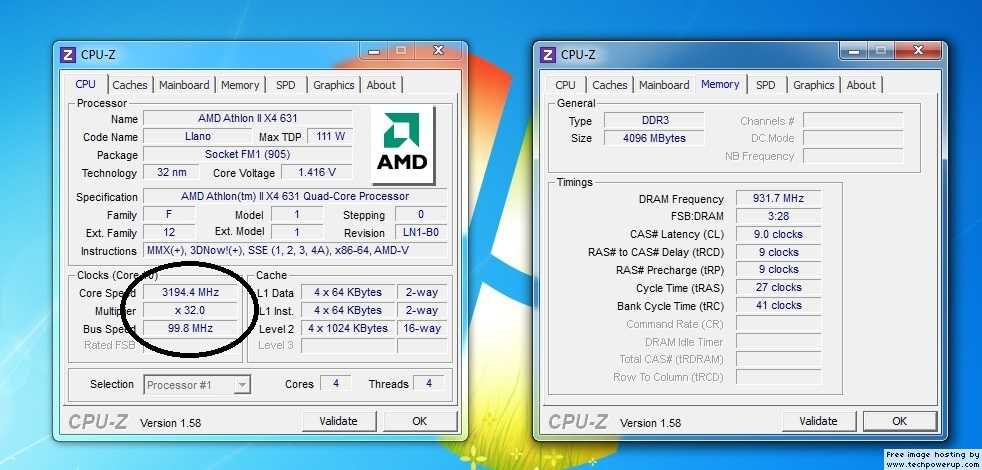 Das können Sie entweder durch Onlinerecherche auf Technik-Webseiten und dem Lesen von Testberichten tun oder indem Sie in einem Fachgeschäft nachfragen. Bei dieser Gelegenheit können Sie auch die Angebote einzelner Händler miteinander vergleichen. Wenn Sie den neuen Prozessor nicht sofort brauchen lohnt es sich auch auf Rabattaktionen zu warten. Auf die Onlineshops der Hersteller sollten Sie ebenfalls einen Blick werfen.
Das können Sie entweder durch Onlinerecherche auf Technik-Webseiten und dem Lesen von Testberichten tun oder indem Sie in einem Fachgeschäft nachfragen. Bei dieser Gelegenheit können Sie auch die Angebote einzelner Händler miteinander vergleichen. Wenn Sie den neuen Prozessor nicht sofort brauchen lohnt es sich auch auf Rabattaktionen zu warten. Auf die Onlineshops der Hersteller sollten Sie ebenfalls einen Blick werfen.
So testet das CHIP Testcenter: Prozessoren
Gutscheine zum Thema Desktop-Prozessoren
Gutscheine bei Notebooksbilliger
Gutscheine bei Cyberport
Gutscheine bei computeruniverse
Gutscheine bei Alternate
CPU-Test 2022: Rangliste der besten Gaming-Prozessoren
Wir empfehlen CPUs aus allen Preisbereichen statt einfach nur die schnellste und teuerste.
Update: 07. 10.2022
Willkommen auf der Welt, Ryzen 7000! Wir haben unsere Kaufberatung zu den Prozessoren um die neuen Macher von AMD erweitert. Die Neuvorstellung hat den Markt ein wenig aufgewirbelt, denn auch AMD kann jetzt über 5,0 GHz. Mit vielen Kernen und Threads will man noch mehr Marktanteile von Intel abschöpfen. Aber macht das auch für Gamer Sinn? Hier erfahrt ihr mehr!
AMD Ryzen 7000: hier gibt’s die neuen Modelle: 7600X, 7700X, 7900X und 7950X
Welche CPU ist die beste für Spieler? Der Prozessor ist das Herzstück des PCs. Welche CPUs von AMD und Intel in verschiedenen Preisbereichen die besten sind, verrät unsere Kaufberatung. Eine Spiele-CPU sollte dabei mindestens über vier Kerne (mit SMT) verfügen. Außerdem beschränken wir uns auf die aktuellen Mainstream-Sockel von AMD (AM4) und die Intel-Sockel 1200 und 1700 . Neu dabei ist nun auch AMD mit dem neuen Sockel AM5.
Intel oder AMD? Die Frage stellt sich schon seit Jahrzehnten und selten war sie schwerer zu beantworten.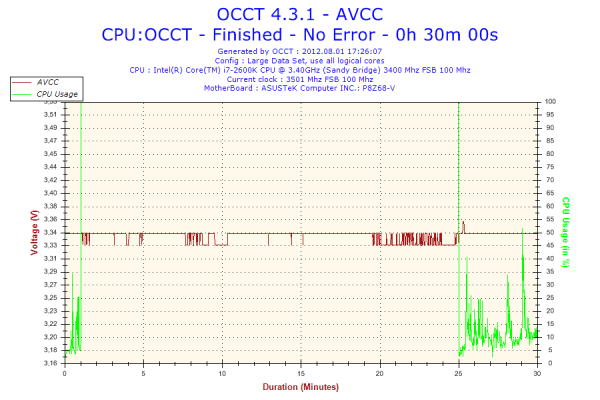 Nach einigen Jahren AMD-Dominanz hat Intel mit Alder Lake zurückgeschlagen — nur um sich die Gaming-Leistungskrone dann doch wieder mit AMD teilen zu müssen. Der Ryzen 7 5800X3D ist nicht als Schnäppchen gestartet, zieht aber im Gegenzug bei zahlreichen Games mit dem Core i9-12900KS gleich oder überholt ihn sogar. Aber muss es immer gleich die teure Highend-CPU sein? Wir klären euch auf:
Nach einigen Jahren AMD-Dominanz hat Intel mit Alder Lake zurückgeschlagen — nur um sich die Gaming-Leistungskrone dann doch wieder mit AMD teilen zu müssen. Der Ryzen 7 5800X3D ist nicht als Schnäppchen gestartet, zieht aber im Gegenzug bei zahlreichen Games mit dem Core i9-12900KS gleich oder überholt ihn sogar. Aber muss es immer gleich die teure Highend-CPU sein? Wir klären euch auf:
Einige auf dieser Seite eingebaute Links sind sogenannte Affiliate-Links. Beim Kauf über diese Links erhält GameStar je nach Anbieter eine kleine Provision – ohne Auswirkung auf den Preis. Mehr Infos.
Top-CPUs für Gaming und Arbeit
Schon für um die 200 Euro voll gamingtauglich: Ein Prozessor, mit dem jedes aktuelle Spiel flüssig läuft, muss gar nicht teuer sein, schon für unter 200 Euro bekommt ihr mit dem Intel Core i5-12400 und dem AMD Ryzen 5 5600X genug Leistung für anständiges Zocken mit hohen FPS (die passende GPU vorausgesetzt natürlich). Mehr Leistung für höhere Anforderungen und mehr Performance bei Anwendungen wie Videoschnitt kann nicht schaden? Auch da haben wir Tipps für euch.
Der Preis-Leistungs-Tipp stammt von Intel
Intel Core i5-12400
Die sechs Performance-Kerne des Core i5-12400 sorgen für so viel Leistung, dass diese CPU auch Highend-GPUs nicht bremst.
- 6 Kerne/12 Threads
- 2,5 GHz/4,4 GHz (Basis/Turbo)
- Intel LGA 1700 und 65 Watt TDP
Preis: ca. 189 Euro
Schnäppchen-CPU: Der Intel Core i5-12400 (sowie der etwas teurere Core i5-12500 mit höherem Takt) reißt sich die Preis-Leistungs-Krone unter den Nagel. Mit unter 200 Euro, für unter 180 Euro gibt es die CPU auch ohne iGPU, duelliert sich Intel mit AMDs Ryzen 5 5600X. Bei der Leistung tun sich die beiden Kontrahenten nicht viel, preislich ist Intel aber besser aufgestellt.
Keine e-Cores: Im Gegensatz zu den größeren Alder-Lake-CPUs nutzt der i5 ausschließlich Performance-Cores. In Spielen ist das bislang sogar eher ein Vor- als ein Nachteil — genutzt werden die e-Cores dort bisher selten, einige Kopierschutzprogramme verweigern damit jedoch den Start.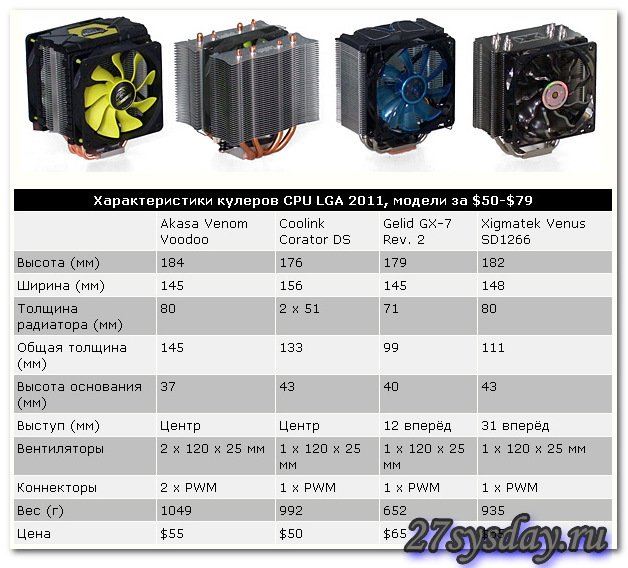
Neues Mainboard benötigt: In den Gesamtpreis müsst ihr allerdings einberechnen, dass ihr auf jeden Fall ein LGA 1700 Mainboard anschaffen müsst. Auch angesichts des niedrigen Preises der CPU raten wir aktuell aber zu einer DDR4-Variante, da DDR5-Speicher unverhältnismäßig teuer ist.
Intel Core i5-12400 bei Mindfactory
Die Preis-Leistungs-Alternative von AMD
AMD Ryzen 5 5600X
Auch wenn der Core i5-12400 dem Ryzen in Benchmarks dicht auf den Fersen ist (und dazu etwas preiswerter), schlägt sich die Zen3-CPU noch immer sehr gut.
- 6 Kerne/12 Threads
- 3,7 GHz/4,7 GHz (Basis/Turbo)
- Sockel AM4 und 65 Watt TDP
Preis: ca. 209 Euro
Gute Leistung, sinkender Preis: AMDs Zen3 wird erst gegen Ende des Jahres abgelöst, bis dahin muss sich der CPU-Hersteller mit seinen Ryzen 5000 aber nicht verstecken. Zwar hat Intel mit dem Core i5-12400 einen Preis-Leistungs-Hit auf dem Markt, wer aber von der deutlich günstigeren AM4-Plattform mit Mainboards für unter 100 Euro profitieren möchte, ist bei AMD gut aufgehoben.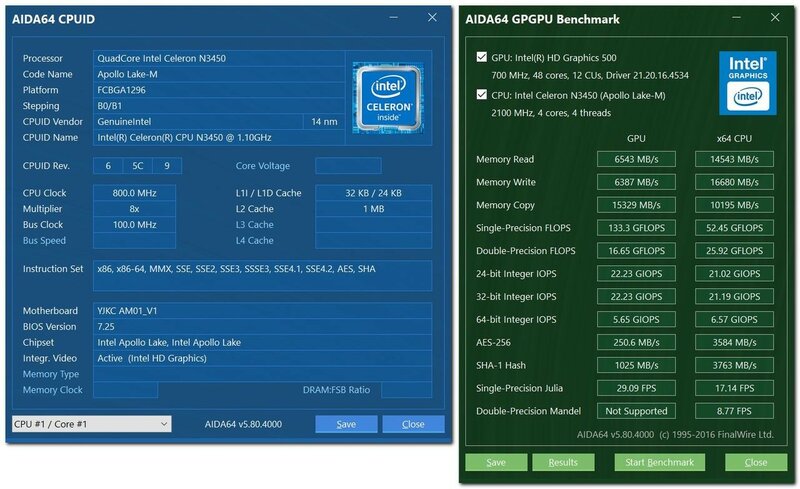 Der Preis des Ryzen 5 5600X gleicht sich zudem immer mehr dem der Intel-Konkurrenz an.
Der Preis des Ryzen 5 5600X gleicht sich zudem immer mehr dem der Intel-Konkurrenz an.
Sechs Kerne sind eine gute CPU-Basis: Während die Zeit der Quadcores mehr oder weniger beendet ist, zumindest aus Gaming-Sicht, reichen sechs Kerne (und SMT) immer noch erfreulich gut aus. Nur wenige Titel ziehen spürbare Vorteile aus acht Cores oder gar e-Cores bei Intel, so dass ihr auch mit dem Ryzen 5 5600X auf hohe Frameraten kommt. Geringfügig günstiger, bei Games aufgrund des beschnittenen Caches aber langsamer wären der Ryzen 5 5600G mit integrierter Vega-GPU oder der neue Ryzen 5 5500. Dieser kostet nur 139 Euro und ist daher für enge Preisbudgets trotzdem eine sehr gute und günstige Wahl. Gut 20 Euro gegenüber dem 5600X spart ihr hingegen mit dem Ryzen 5 5600, der sich vom X-Modell nur geringfügig im Takt unterscheidet.
AMD Ryzen 5 5600X bei Mindfactory
Intels Budget-CPU für 100 Euro
Core i3 12100F
Der Intel Core i3 12100F wirkt mit 4 Kernen und 8 Threads fast schon aus der Zeit gefallen, da viele Spiele aber auch mit weniger als sechs Kernen bzw. 12 Threads sehr gut laufen und eher auf Takt und IPC setzen, könnt ihr damit trotzdem gut die Zeit überbrücken bis ihr genug für einen größeren Prozessor gespart habt.
12 Threads sehr gut laufen und eher auf Takt und IPC setzen, könnt ihr damit trotzdem gut die Zeit überbrücken bis ihr genug für einen größeren Prozessor gespart habt.
- 4 Kerne/8 Threads
- 3,3 GHz/4,3 GHz (Basis/Turbo)
- Sockel 1700 und 65 Watt TDP
Preis: ca. 100 Euro
Budget-CPU von Intel: Auch wenn wir euch klar zum Sechskerner raten — wenn ihr wirklich auf jeden Euro achten müsst oder nur eine Übergangs-CPU auf zukunftssicherem Unterbau sucht, kann der Core i3 durchaus verlocken. Dank Hyperthreading bietet er acht Threads, zudem legen die starken Performance-Kerne mit bis zu 4,3 GHz eine gute Single-Core-Performance vor.
Guter Einstieg mit Upgradepfad: Für relativ wenig Geld bekommt ihr eine solide CPU, die in aktuellen Spielen durchaus hohe FPS errechnen kann, für GPU-Schwergewichte wie die RTX 3080 sollte es aber etwas mehr Power sein. Dank der modernen LGA1700-Plattform, die ihr für die CPU benötigt, könnt ihr aber problemlos später auf eine deutlich kräftigere CPU upgraden. Spart daher nicht zu sehr beim Mainboard wenn ihr diese Option im Auge habt.
Spart daher nicht zu sehr beim Mainboard wenn ihr diese Option im Auge habt.
Optional mit Grafik: Zwar sind halbwegs bezahlbare Grafikkarten kein so großes Problem mehr wie vor ein paar Monaten, ein zumindest für einfachere Spiele und den Windows-Grundbetrieb ausreichende GPU in der Hinterhand zu haben, kann aber trotzdem nicht schaden. Im Core i3-12100F ist zwar keine iGPU verbaut, dafür aber im etwa 109 Euro teuren i3-12100 ohne f am Ende.
Intel Core i3 12100F bei Mindfactory
AMDs Budget-CPU für 115 Euro
AMD Ryzen 5 5500
Der Ryzen 5 5500 ist an interessanten Stellen abgespeckt worden — wenn euch das nicht stört, könnt ihr gegenüber dem ansonsten nur wenig schnelleren Ryzen 5 5600 sparen.
- 6 Kerne/12 Threads
- 3,6 GHz/4,2 GHz (Basis/Turbo)
- Sockel AM4 und 65 Watt TDP
Preis: ca. 115 Euro
AMDs Sechskern-Einstieg: Mit Budget-CPUs hat sich AMD in den letzten Jahren schwer getan, mit dem Ryzen 5 5500 wagt sich das Unternehmen dann auch nicht unter die 100-Euro-Grenze sondern legt bewusst etwas im Preis aber auch in der Leistung drauf. Sechs Kerne, 12 Threads und gute Taktraten sorgen in Games für deutlich mehr Leistung als Intels (zugegeben, günstigerer) Core i3. Der seinerseits etwas teurere Core i5 12400 ist ebenfalls in Schlagdistanz.
Sechs Kerne, 12 Threads und gute Taktraten sorgen in Games für deutlich mehr Leistung als Intels (zugegeben, günstigerer) Core i3. Der seinerseits etwas teurere Core i5 12400 ist ebenfalls in Schlagdistanz.
Einsparung bei PCIe: Die Cezanne-CPU verzichtet auf PCIe 4.0 und setzt stattdessen auf den nur halb so schnellen Vorgänger PCIe 3.0. Die GPU wird aber weiterhin mit vollen 16 Lanes angebunden. Leistungseinbußen gibt es bei den meisten Grafikkarten nicht, die AMD Radeon 6500XT ist da die unrühmliche Ausnahme. Wenn ihr damit leben könnt, dass ihr auf PCIe Gen4-SSDs verzichten müsst, ist der Ryzen 5 5500 eine günstige Alternative zum 5600.
AMD Ryzen 5 5500 bei Mindfactory
Intel Core i5 12600K
Zwar nur 6 Performance-Kerne, dafür aber noch vier kleinere Cores in der Hinterhand — und eine Plattform mit DDR5 und PCIe 5.0.
- 6+4 Kerne/16 Threads
- 3,7 GHz/4,9 GHz (Basis/Turbo)
- Sockel 1700 und 125 Watt TDP
Preis: ca.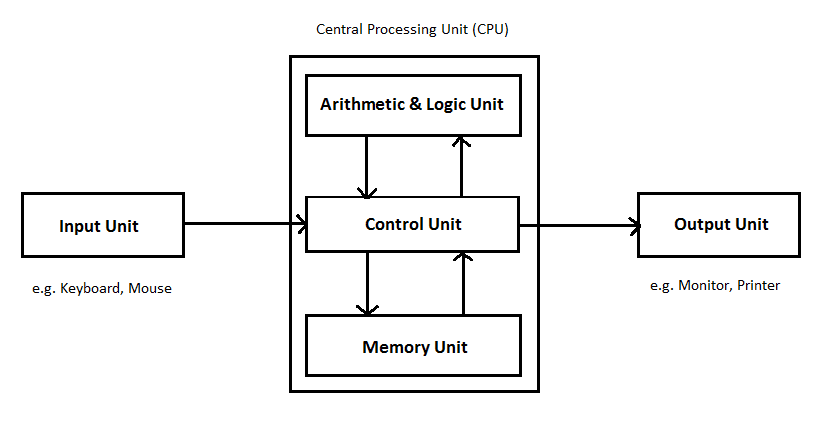 350 Euro
350 Euro
Zukunftssichere Plattform: Zwar gehört der Core i5-12600K nicht zum Alder Lake-Highend und bietet nur sechs Performancekerne sowie vier kleinere zum Energiesparen, die gesteigerte Singlecoreleistung und vor allem die extrem moderne Plattform machen die CPU dann auch trotz ihres recht hohen Preises interessant. DDR5 und PCIe 5.0 (wobei letzteres noch eher irrelevant ist) bietet sonst noch niemand.
Die Leistung bei Spielen liegt auf hohem Niveau und muss sich endlich auch hinter Zen3 nicht mehr verstecken. Bei vielen Spielen, die von den zusätzlichen e-Cores keinen Gebrauch machen, seid ihr mit einem Core i5-12400 oder 12500 aber fast genauso schnell dabei. Geht es euch aber auch um Anwendungsleistung, macht sich der e-Core-Boost durchaus bemerkbar.
Beachtet aber beim Kauf auch die Folgekosten, ein neues Mainboard beispielsweise benötigt ihr auf jeden Fall. Dieses entscheidet dann, ob ihr den günstigen DDR4-Speicher oder den moderneren DDR5 einsetzen könnt und müsst. Für das beste Zusammenspiel der P- und E-Cores solltet ihr zudem Windows 11 nutzen.
Für das beste Zusammenspiel der P- und E-Cores solltet ihr zudem Windows 11 nutzen.
Intel Core i7 12600K bei Mindfactory
Acht Kerne für Anwendungen und Games
AMD Ryzen 7 5700X
Der Ryzen 7 5700X bietet viel Leistung sowohl bei Games als auch bei Anwendungen und überrundet teilweise sogar Intels Highend-Klasse.
- 8 Kerne/16 Threads
- 3,4 GHz/4,6 GHz (Basis/Turbo)
- Sockel AM4 und 65 Watt TDP
Preis: ca. 249 Euro
Neuzugang: Lange fehlte ein günstigerer Achtkerner ohne das x-Suffix im Angebot bei AMD. Mit dem Ryzen 7 5700X ist dieser jüngst erschienen und setzt primär auf Effizienz. Statt einer TDP von 105 Watt sind es nur noch 65 Watt, im Gegenzug wurde der Basistakt um 200 MHz und der Turbotakt um 100 MHz gesenkt. Das bedeutet nur geringe Leistungseinbußen bei geringerer Energieaufnahme und etwas niedrigerem Preis.
Übertaktbar: Die Leistung eines Ryzen 7 5800X könnt ihr euch bei Bedarf aber problemlos per Overclocking wieder zurückholen. Auch der 5700X verfügt über einen offenen Multiplikator. Nutzt ihr bereits eine AM4-Plattform, bietet sich die CPU als vergleichsweise günstiges Upgrade von einem älteren Zen-Prozessor an aber auch ein kompletter Neukauf kann sich trotz der später im Jahr anstehenden AM5-Basis lohnen — zu langsam ist die CPU auch dann noch nicht.
Auch der 5700X verfügt über einen offenen Multiplikator. Nutzt ihr bereits eine AM4-Plattform, bietet sich die CPU als vergleichsweise günstiges Upgrade von einem älteren Zen-Prozessor an aber auch ein kompletter Neukauf kann sich trotz der später im Jahr anstehenden AM5-Basis lohnen — zu langsam ist die CPU auch dann noch nicht.
AMD Ryzen 7 5700X bei Mindfactory
Intel oder AMD: Welche Prozessoren sind besser?
Kaum noch funktionale Unterschiede: Die alte Frage lässt sich einfach beantworten — kauft einfach die CPU, die am besten zu eurem Anwendungsprofil und eurer Preisvorstellung passt. Funktionale Unterschiede gibt es so gut wie keine mehr und instabile AMD-Systeme gehören ebenfalls der Vergangenheit an — und selbst früher waren es eher unsäglich instabile Mainboards oder Overclocking und nicht die CPUs selbst, die Probleme verursacht haben.
Intel hat mit Alder Lake nicht nur die Leistung der primären Rechenkerne erhöht, auch im Bereich der IPC (Instructions per cycle, pro-MHz-Leistung) sondern bei den größeren Modellen auch noch zusätzliche effizienz-Kerne angehängt. Diese sind in Spielen aktuell kaum vorteilhaft, sorgen aber für zusätzliche Anwendungsleistung. Wenn ihr den PC nicht nur rein zum Zocken benutzt, könnte daher ein i5-12600 sinnvoller sein als ein 12400.
Diese sind in Spielen aktuell kaum vorteilhaft, sorgen aber für zusätzliche Anwendungsleistung. Wenn ihr den PC nicht nur rein zum Zocken benutzt, könnte daher ein i5-12600 sinnvoller sein als ein 12400.
AMD ist aber nicht so schlecht aufgestellt wie man angesichts der nun bereits einige Zeit auf dem Markt erhältlichen Zen3-Kerne denken würde. Bei Videoschnitt und 3D-Renderings bietet die reine Kernmenge der Ryzen 9 einen klaren Vorteil, bei Spielen schlagen sich die Ryzen aber ebenfalls noch gut.
CPU (CPU) processor — what is a processor, a central processing unit and why is it needed?
In the article we will talk about what a CPU (central processing unit) is, consider the functions of the processor and analyze how it works.
A processor is a device responsible for processing information. It is called differently: central processing unit (CPU) or central processing unit (CPU) or central processing unit (CPU), but all these terms denote an element that is the “brain” of a computing device (smartphone, TV, computer, tablet, camera , server).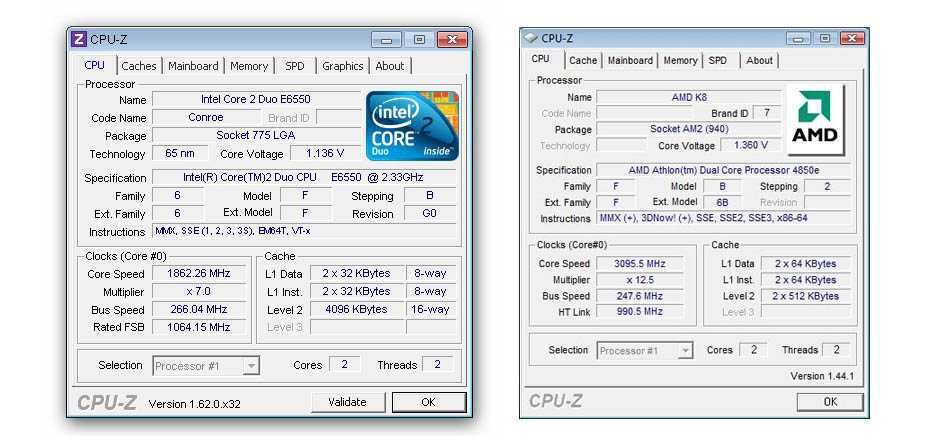 nine0003
nine0003
The processor is a square plate with a side of about 5 centimeters, on one side of which there are connectors that look like legs. With their help, it is attached to the motherboard — a special element for installing additional extensions.
Processor power is responsible for the speed of processing commands and affects productivity.
What does the processor do
Why do you need a processor in devices? It manages all computational operations and elements. Functions performed by the CPU:
- performs operations on RAM data.
- creates commands and processes requests from internal components or external devices.
- temporarily stores data on operations performed or commands issued.
- performs logical and arithmetic operations with the received information.
- transmits the results of information processing to external devices.
What the CPU is made of
The CPU is not the final part. It consists of three components:
It consists of three components:
- Processor core.
The kernel is responsible for most of all CPU functions. It decrypts, reads, sends instructions to or receives instructions from other elements. At the same time, the kernel is able to execute only one command, this happens in hundredths of a second. Thus, the presence of one core indicates that the PC or server will execute all instructions in turn. Modern hardware rarely uses single-core processors, as in this case it is very slow. nine0003
The core, in turn, consists of two more parts:
- Arithmetic logic unit (ALU). It performs arithmetic and logical operations.
- Control unit (CU). It coordinates the work of all parts of the processor, its interaction with external equipment. This happens with the help of electrical signals.
- Memory device.
This is a small processor memory that stores information about current commands and intermediate results. It consists of cache and registers. Registers are responsible for «remembering» information, and the cache stores frequently executed instructions. The cache is accessed faster than the RAM, so the size of the processor cache affects the speed of the CPU. nine0003
It consists of cache and registers. Registers are responsible for «remembering» information, and the cache stores frequently executed instructions. The cache is accessed faster than the RAM, so the size of the processor cache affects the speed of the CPU. nine0003
- Tires
These are channels for transmitting commands within the processor.
Main characteristics of processors
- Socket (Socket)
This is the socket for installing the processor on the motherboard. There are many types of sockets, so when choosing a CPU, you need to make sure that its socket fits the motherboard. For example, if the motherboard has an LGA 1151 socket, then you need to select a processor with the same socket, otherwise it cannot be installed. nine0003
- Clock frequency
This parameter shows the number of processed operations (cycles) per second. Measured in megahertz (MHz) or gigahertz (GHz).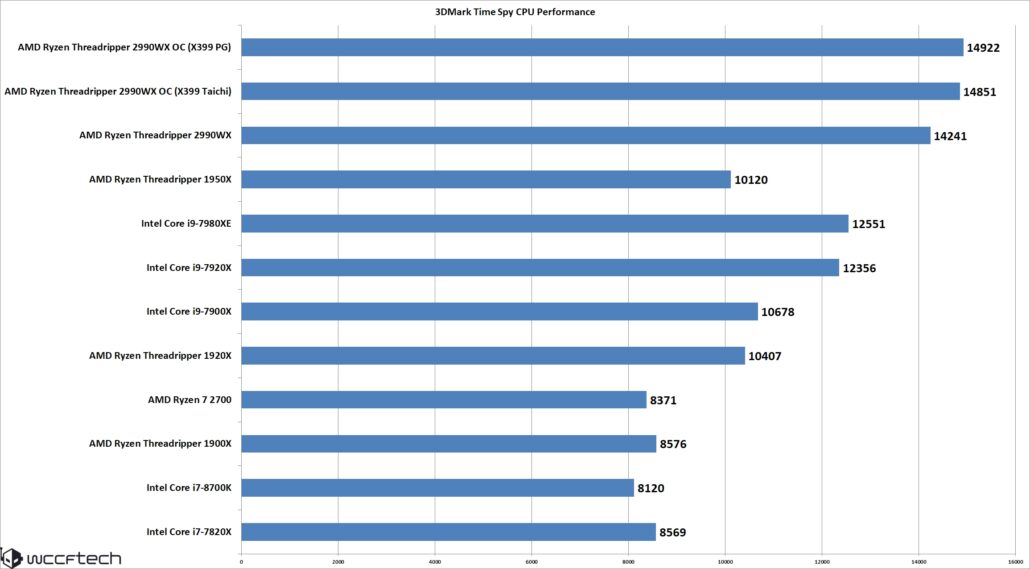 The higher the clock speed, the better the performance of the processor.
The higher the clock speed, the better the performance of the processor.
For example, a 1 MHz processor processes 1 million operations per second, while a 1 GHz processor processes 1 billion operations.
- Number of cores
As mentioned above, the core is the most important part of the processor and the more cores, the more commands the CPU can process simultaneously. The more cores in the processor, the higher its performance and speed of operations. nine0003
- Number of threads
Shows how many streams of information can be processed by one core. A thread is a technology that allows you to share the performance of the core, that is, physically the core is one, but in fact it can simultaneously process two processes. Currently, not all processors have additional threads.
- Cache
The cache consists of three memory levels: L1, L2, L3. The more memory, the better the processor works. nine0003
nine0003
L1 cache — contains the data that the program may need to execute the instruction,
L2 cache — is slower than the first level cache, but larger in size. The L2 cache contains information that may be needed in the future.
The L3 cache is the largest and also the slowest cache. Its volume varies from 4 to 50 megabytes.
- Processor capacity
This is the number of bits of information that the processor can process in one cycle (operation). For example, the data size per clock is 1 byte, the processor considers eight-bit (8 bit), if the data size is 2 bytes, then the CPU is sixteen-bit (16 bit), with a size of 4 bytes, the processor is thirty-two-bit (32 bit), in the case of an 8-byte the data size of the processor is considered to be sixty-four bits (64 bits). nine0003
The larger the size of the processed data, the higher the processor performance.
How the processor works
The CPU processes commands in binary code, in simple terms: 0 is “no”, 1 is “yes”. Each request that comes to the processor consists of combinations of two numbers 0 and 1.
Each request that comes to the processor consists of combinations of two numbers 0 and 1.
All operations inside the processor are a repetitive cycle that does not stop while the computer or server is running: take an instruction from memory, read and decrypt the command, perform actions. nine0003
Consider how the computer processor works in more detail:
- The processor control unit takes from the RAM, where the program is located, certain data and commands that need to be executed. All this information is loaded into cache memory.
- Having received data from the cache, the processor writes them to registers. In this case, instructions are sent to the instruction registers, and values are placed in the data registers.
- After reading the instructions and data, the ALU executes these commands. nine0018
- Command execution results are written to registers. If the calculations are completed, they are also written to the processor’s buffer memory.
 Since the number of registers is small, intermediate results are stored in the cache.
Since the number of registers is small, intermediate results are stored in the cache. - If a calculation cycle is completed, the result is stored in the computer’s RAM to free up space in the CPU buffer for new calculations. If the cache is full, then unused information is sent to the lower-level cache or to RAM. nine0018
Types of processors
There are processors for small appliances, such as laptop computers, phones, they can be called desktop CPUs. The second type of processors — server, designed for equipment that works with huge amounts of data.
The main functions of desktop processors are to perform the functions of home computers: launching several programs, moving information, working with browsers, writing data to various drives, running games, processing photo and video materials. They do not need a large number of cores, but they do need a high clock speed. nine0003
Server processors can handle multiple connected clients and require more cores, higher caches, and more RAM support.
They also distinguish between types of processors according to the principle of executing instructions:
- CISC (Complete Instruction Set Computing) — this type of processor with a complete set of instructions. They are characterized by:
— a large number of different machine instructions, each instruction is executed in several CPU cycles
— a small number of general purpose registers
— various instruction formats with different lengths
— the predominance of multiple addressing
- RICS (Restricted Instruction Set Computer) — a processor whose performance is improved by simplifying instructions. A RISC CPU uses a limited set of fast instructions.
Each instruction is executed in one cycle. These processors require fewer transistors, reducing their power consumption and cost. The RISC architecture uses the simplest commands, which simplifies the process of their execution. More complex commands are processed as a composite of «simple» commands. nine0003
More complex commands are processed as a composite of «simple» commands. nine0003
- VLIW (Very Long Instruction Word) — processors that work by combining simple instructions into a “bundle”. These commands must be independent of each other and carried out in parallel.
The VLIW architecture has been known since the early 80s. It is based on the fact that the task of efficient parallel execution of commands is assigned to a «reasonable» compiler (a program that translates commands into machine code). The compiler initially analyzes the entire instruction, selects instructions that can be executed at the same time. Then combines such commands into bundles, which are considered as extra-long commands. The result is several super-long commands that are executed simultaneously. nine0003
How to choose a processor
There are two major manufacturers on the processor market: AMD and Intel. They are in close competition with each other, although AMD aims to create a niche product with a low price, and Intel aims for top-end, high-performance processors with high efficiency and low power consumption.
The main characteristics by which you need to choose a processor is: speed (GHz), number of cores, cache memory, clock frequency (MHz or GHz). nine0003
Before proceeding with the selection of the CPU, it is necessary to determine what the processor is for, what tasks are facing the equipment on which the CPU will be installed.
If you need to perform common tasks (working in search engines, in Word and Excel, reading mail) on a laptop or PC, then the built-in processors with standard parameters are enough for you.
Let’s say you want to buy a laptop for online gaming or video editing. In this case, you will need more powerful hardware specifications. It is better to choose a PC for games, photo or video processing with processors with at least four cores. nine0003
An octa-core CPU is required for a powerful personal computer, such as professional software (3ds Max, Adobe Lightroom Classic, SiSoftware Sandra 2020, Adobe Premiere Pro, AutoCAD) or professional gamers.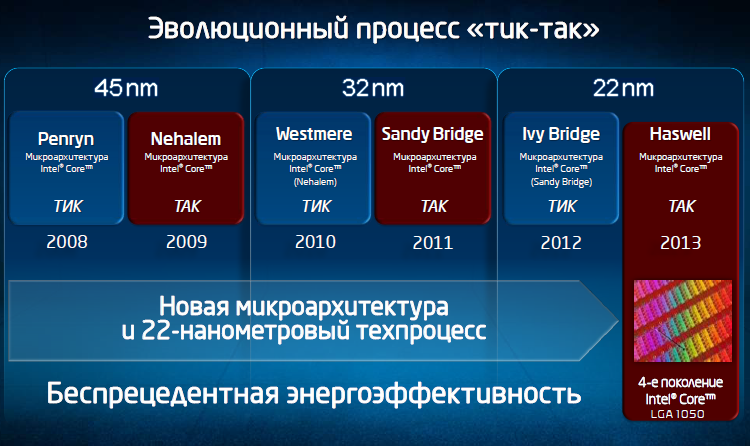
Another important indicator when choosing a CPU is the clock speed. For simple dual-core processors, it is 3.5 GHz — this is the middle class of computers. The higher the clock level, the faster the processor runs. For example, for a gaming laptop, it is desirable to choose a CPU with a frequency of at least 4 GHz. nine0003
Selecting a processor for a server is a separate task that is best left to a specialist. Let us briefly note that it is worth considering a number of parameters: CPU characteristics, structure and composition of the server, how many users it will be designed for, what type of tasks will be performed on it (volume calculations, data storage, placement of programs with constant access to them, etc. .). It is also worth considering the budget within which you want to purchase equipment.
Since the load on computing systems is growing rapidly (new applications and programs appear that process more information), when choosing a processor, it is better to make a performance margin of about 20-30% with a view to the future. nine0003
nine0003
Conclusion
The purpose of the processor is to process information and execute various commands. Without a CPU, a computer will not work, it performs absolutely all tasks, even the simplest ones. The processor in the equipment is like the brain inside a person.
The power of the PC and server hardware depends on the processor. When choosing devices, always build on the tasks that you plan to perform, and also make a performance margin in case the load on the equipment increases. nine0003
Central processing unit | it’s… What is a CPU?
Multi-core processors
Contain multiple processor cores in a single package (on one or more dies).
Processors designed to run one copy of the operating system on multiple cores are a highly integrated implementation of the «Multiprocessor» system.
Dual-core processors include concepts such as the presence of logical and physical cores: for example, a dual-core Intel Core Duo processor consists of one physical core, which in turn is divided into two logical cores. The Intel Core 2 Quad processor consists of four physical cores, which significantly affects the speed of its operation. nine0003
The Intel Core 2 Quad processor consists of four physical cores, which significantly affects the speed of its operation. nine0003
On September 10, 2007, native (in the form of a single chip) quad-core processors for AMD Quad-Core Opteron servers were released for sale, which had the code name AMD Opteron Barcelona [1] during development. November 19, 2007 went on sale quad-core processor for home computers AMD Quad-Core Phenom [2] . These processors implement the new K8L (K10) microarchitecture.
On September 27, 2006, Intel demonstrated a prototype 80-core processor [3] . It is assumed that mass production of such processors will not be possible before the transition to the 32-nanometer process technology, and this, in turn, is expected by 2010.
Dual- and quad-core processors are currently widely available, in particular the Intel Core 2 Duo based on the 65 nm Conroe core (later on the 45 nm Wolfdale core) and the Athlon64X2 based on the K8 microarchitecture. In November 2006, the first quad-core Intel Core 2 Quad processor based on the Kentsfield core was released, which is an assembly of two Conroe crystals in one package. A descendant of this processor was the Intel Core 2 Quad on the Yorkfield core (45 nm), which is architecturally similar to Kentsfield but has a larger cache and operating frequencies. nine0003
In November 2006, the first quad-core Intel Core 2 Quad processor based on the Kentsfield core was released, which is an assembly of two Conroe crystals in one package. A descendant of this processor was the Intel Core 2 Quad on the Yorkfield core (45 nm), which is architecturally similar to Kentsfield but has a larger cache and operating frequencies. nine0003
AMD has gone its own way, manufacturing quad-core processors on a single chip (unlike Intel, whose processors are actually two dual-core chips glued together). Despite all the progressiveness of this approach, the first «quad-core» of the company, called AMD Phenom X4, was not very successful. Its lagging behind contemporary competitor processors ranged from 5 to 30 percent or more, depending on the model and specific tasks. nine0003
At present (Q1-Q2 2009) both companies have upgraded their lines of quad-core processors. Intel introduced the Core i7 family, which consists of three models running at different frequencies. The main highlights of this processor is the use of a three-channel memory controller (DDR-3 type) and eight-core emulation technology (useful for some specific tasks). In addition, thanks to the general optimization of the architecture, it was possible to significantly improve the performance of the processor in many types of tasks. The weak side of the platform using the Core i7 is its excessive cost, since the installation of this processor requires an expensive motherboard based on the Intel-X58 chipset and a three-channel DDR3 memory kit, which is also currently very expensive. nine0003
The main highlights of this processor is the use of a three-channel memory controller (DDR-3 type) and eight-core emulation technology (useful for some specific tasks). In addition, thanks to the general optimization of the architecture, it was possible to significantly improve the performance of the processor in many types of tasks. The weak side of the platform using the Core i7 is its excessive cost, since the installation of this processor requires an expensive motherboard based on the Intel-X58 chipset and a three-channel DDR3 memory kit, which is also currently very expensive. nine0003
AMD, in turn, introduced a line of Phenom II X4 processors. During its development, the company took into account its mistakes: the cache volume was increased (obviously insufficient for the first Phenom), and the processor production was transferred to a 45 nm process technology, which made it possible to reduce heat dissipation and significantly increase operating frequencies. In general, AMD Phenom II X4 is on a par with previous generation Intel processors (Yorkfield core) in terms of performance and lags far behind Intel Core i7. However, taking into account the moderate cost of the platform based on this processor, its market prospects look much more rosy than its predecessor. nine0003
However, taking into account the moderate cost of the platform based on this processor, its market prospects look much more rosy than its predecessor. nine0003
Caching
Caching is the use of additional high-speed memory (cache memory) to store copies of blocks of information from the main (operative) memory, which are likely to be accessed in the near future.
There are 1st, 2nd and 3rd level caches. The 1st level cache has the lowest latency (access time), but a small size, in addition, 1st level caches are often made multiported. So, AMD K8 processors were able to produce 64-bit write + 64-bit read or two 64-bit reads per cycle, AMD K8L can produce two 128-bit reads or writes in any combination, Intel Core 2 processors can produce 128-bit write + 128-bit read per beat. Level 2 caches typically have much larger access latencies, but can be made much larger. Level 3 cache is the largest and slowest, but it is still much faster than RAM. nine0003
Parallel architecture
The von Neumann architecture has the disadvantage that it is sequential.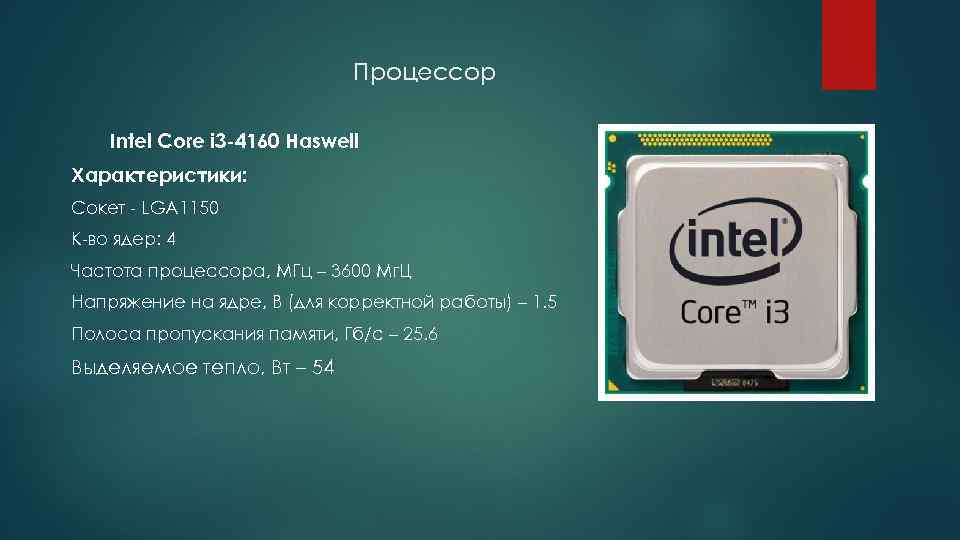 No matter how huge the data array needs to be processed, each of its byte will have to go through the central processor, even if the same operation is required on all the bytes. This effect is called the von Neumann bottleneck .
No matter how huge the data array needs to be processed, each of its byte will have to go through the central processor, even if the same operation is required on all the bytes. This effect is called the von Neumann bottleneck .
To overcome this shortcoming, processor architectures called parallel . Parallel processors are used in supercomputers.
Possible options for parallel architecture are (according to Flynn’s classification):
- MISD — many command streams, one data stream;
- MIMD — many command streams, many data streams.
Processor Technology
History of
processors
The first publicly available microprocessor was the 4-bit Intel 4004. It was succeeded by the 8-bit Intel 8080 and the 16-bit 8086, which laid the foundation for the architecture of all modern desktop processors. But due to the prevalence of 8-bit memory modules, the 8088 was released, a clone of the 8086 with an 8-bit memory bus. Then followed its modification 80186. The 80286 processor introduced a protected mode with 24-bit addressing, which allowed using up to 16 MB of memory. The Intel 80386 processor appeared in 1985 and introduced an improved protected mode, 32-bit addressing, which allowed the use of up to 4 GB of RAM and support for the virtual memory mechanism. This line of processors is built on a register computing model.
Then followed its modification 80186. The 80286 processor introduced a protected mode with 24-bit addressing, which allowed using up to 16 MB of memory. The Intel 80386 processor appeared in 1985 and introduced an improved protected mode, 32-bit addressing, which allowed the use of up to 4 GB of RAM and support for the virtual memory mechanism. This line of processors is built on a register computing model.
In parallel, microprocessors are being developed, based on the stack computing model.
Modern manufacturing technology
Athlon XP microprocessor in bridgeless package
In modern computers, processors are made in the form of a compact module (about 5 × 5 × 0.3 cm in size) inserted into a ZIF socket. Most modern processors are implemented as a single semiconductor chip containing millions, and more recently even billions of transistors. In the first computers, processors were bulky units that sometimes took up entire cabinets and even rooms, and were made on a large number of individual components. nine0003
nine0003
In the early 1970s, breakthroughs in LSI and VLSI (Large and Very Large Integrated Circuits) microcircuit technology made it possible to fit all the necessary CPU components into a single semiconductor device. So-called microprocessors appeared. Now the words microprocessor and processor have practically become synonymous, but then it was not so, because ordinary (large) and microprocessor computers peacefully coexisted for at least 10-15 more years, and only in the early 80s did microprocessors supplant their older counterparts. It must be said that the transition to microprocessors later allowed the creation of personal computers, which have now penetrated almost every home. nine0003
The first Intel 4004 microprocessor was introduced on November 15, 1971 by Intel Corporation. It contained 2300 transistors, ran at a clock frequency of 108 kHz and cost $300.
Over the years of microprocessor technology, many different microprocessor architectures have been developed. Many of them (in supplemented and improved form) are still used today. For example, Intel x86, which evolved first into 32 bit IA32 and later into 64 bit x86-64. x86 architecture processors were originally used only in IBM personal computers (IBM PCs), but are now increasingly used in all areas of the computer industry, from supercomputers to embedded solutions. You can also list architectures such as Alpha, SPARC, MIPS (RISC — architectures) and EPIC architecture). nine0003
Many of them (in supplemented and improved form) are still used today. For example, Intel x86, which evolved first into 32 bit IA32 and later into 64 bit x86-64. x86 architecture processors were originally used only in IBM personal computers (IBM PCs), but are now increasingly used in all areas of the computer industry, from supercomputers to embedded solutions. You can also list architectures such as Alpha, SPARC, MIPS (RISC — architectures) and EPIC architecture). nine0003
Most of the processors currently in use are Intel-compatible, that is, they have a set of instructions, etc., like processors from Intel, AMD and 8086, i286 (in Russian computer slang it is called «two», «two»), i386 («three ”, “three rubles”), i486 (“four”), Pentium II, Pentium III, Pentium 4, Core 2 Duo, Itanium, etc. AMD has Amx86 processors in its line (comparable to Intel 486), Sempron (comparable to Intel Celeron), Athlon 64, Athlon 64 X2,
Future prospects
In the next 10-20 years, the material part of the processors will most likely change due to the fact that the technological process will reach the physical limits of production. Perhaps they will be:
Perhaps they will be:
- Quantum computers
- Molecular computers
Quantum processors
Processors based entirely on quantum effects. Currently, work is underway to create working versions of quantum processors.
Russian microprocessors
The development of microprocessors in Russia is carried out by ZAO MCST. He developed and put into production universal RISC microprocessors with design standards of 130 and 350 nm. The development of a new generation superscalar processor Elbrus has been completed. The main consumers of Russian microprocessors are military-industrial complex enterprises.
Development history of
- 1998,
- 2001, SPARC-compatible microprocessor MCST-R150 with a topological norm of 350 nm and a clock frequency of 150 MHz. nine0018
- 2003, SPARC-compatible microprocessor MCST-R500 with a topological norm of 130 nm and a clock frequency of 500 MHz.
- 2004, Elbrus 2000 (E2K) is a new generation microprocessor based on fully custom technology with a topological norm of 130 nm and a clock frequency of 300 MHz (copyrights are protected by 70 patents).

- 2005
- January
- Successfully completed state tests of the MCST-R500 microprocessor — the most advanced modification of the first modern domestic universal Elbrus-90 micro successfully type-tested at the end of 2004.
- On the basis of MCST-R500 microprocessors, within the framework of the Elbrus-90micro project, a microprocessor module MB / C was created, which in fact is a single-board computer.
- Based on the microprocessor core MCST-R500, the development of a dual-processor system on a chip (SNC) has begun. All controllers will also be placed on the chip, ensuring its functioning as an independent computer. On the basis of SNK, it is planned to create families of new small-sized portable computing devices such as laptops, handhelds,
nine0018
- May
- The first samples of the Elbrus 2000 microprocessor were obtained. This microprocessor is built according to modern technology developed by Russian scientists and has an explicit parallelism architecture (VLIW/
- January
Other national projects
China
See also
- Adaptives
- Microcontroller
- Microprocessor system
- Computer hardware platform
nine0017 System on a chip
Notes
- ↑ http://www.

